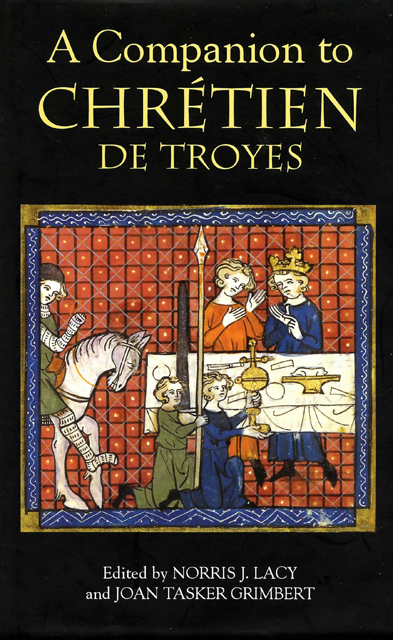5 - Narrative Poetics: Rhetoric, Orality and Performance
Published online by Cambridge University Press: 23 March 2023
Summary
Poetics, or the art of poetry, is traditionally viewed in the Middle Ages as ancillary to rhetoric. Rhetoric in Chrétien's times was the art of persuasion by eloquence. The rhetorical mode was used in Chrétien's romances. They were written for reading aloud, using embellishment that enhances such reading while effectively communicating a story and its lessons and setting out opposing views on issues of interest to aristocratic audiences in Chrétien's time. Reading aloud can, of course, be highly diversified, ranging from private settings like that illustrated in Yvain where a maiden reads a romance to her parents (Yvain, vss 5358–68), to public readings illustrated in many medieval manuscripts; mimes could act out what a reader related. All such readings are performances and include interpretation. They are common in societies like Chrétien's in which most members of the aristocratic audiences he addresses cannot read. Chrétien's romances also include ‘intrusions’ by a narrator reading aloud.
The octosyllabic rhyming couplet is characteristic of medieval French verse romance. Chrétien contributed to innovations in French versification, notably couplet breaking and rich rhyme. Rhetorical colours also characterize his verse, including tropes, or language that is not merely literal, and figures of thought and speech, or figurative language. This is ‘rhetoric’ in the sense of the word common today.
Such embellishment is not hard to find in Chrétien's romances. Insistent Tu pronouns expressing a knight's scorn for Lancelot because he rode in the cart illustrate annominatio, or play with form or meaning of words.
‘Tu? Tu? Comant l’osas panser?
Einz te deüsses apanser
Que tu anpreïsses tel chose
A quel fin et a quel parclose
Tu an porroies parvenir,
Si te deüst resovenir
De la charrete ou tu montas’. (Lancelot, vss 2589–95)
[‘You! You? Whatever gave you that idea? Before undertaking such a thing you should have thought of how you might end up; and you should have recalled the cart you climbed into’.]
Elsewhere, alliteration, assonance and internal rhyme evoke a maiden's distress while alone in the woods during a stormy night: ‘Et la nuis et li bos li font / Grant anuy, mais plus li anuie / Que li bos ne la nuis la pluie’, Yvain, vss 4838–40 [the night and the forest frightened her, but she was more upset by the rain than either the night or the forest].
- Type
- Chapter
- Information
- A Companion to Chrétien de Troyes , pp. 52 - 63Publisher: Boydell & BrewerPrint publication year: 2005



